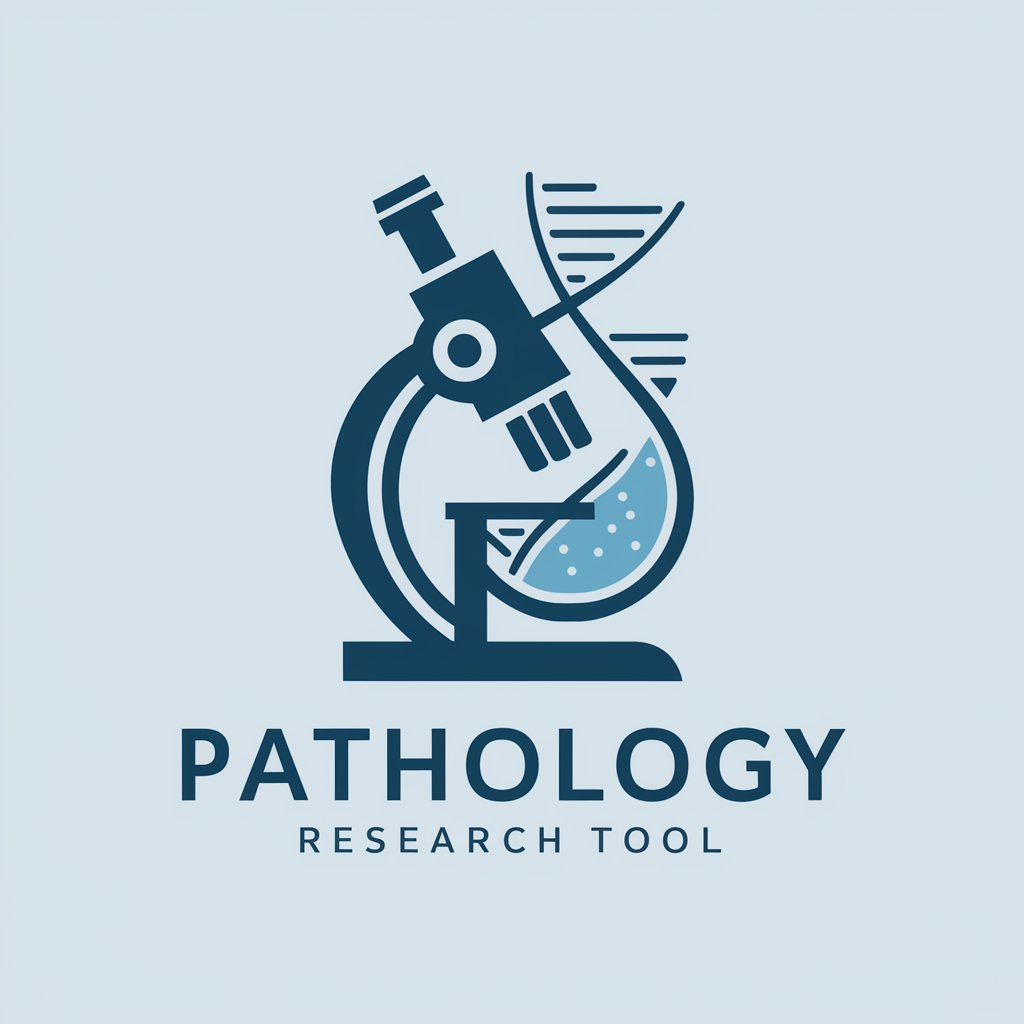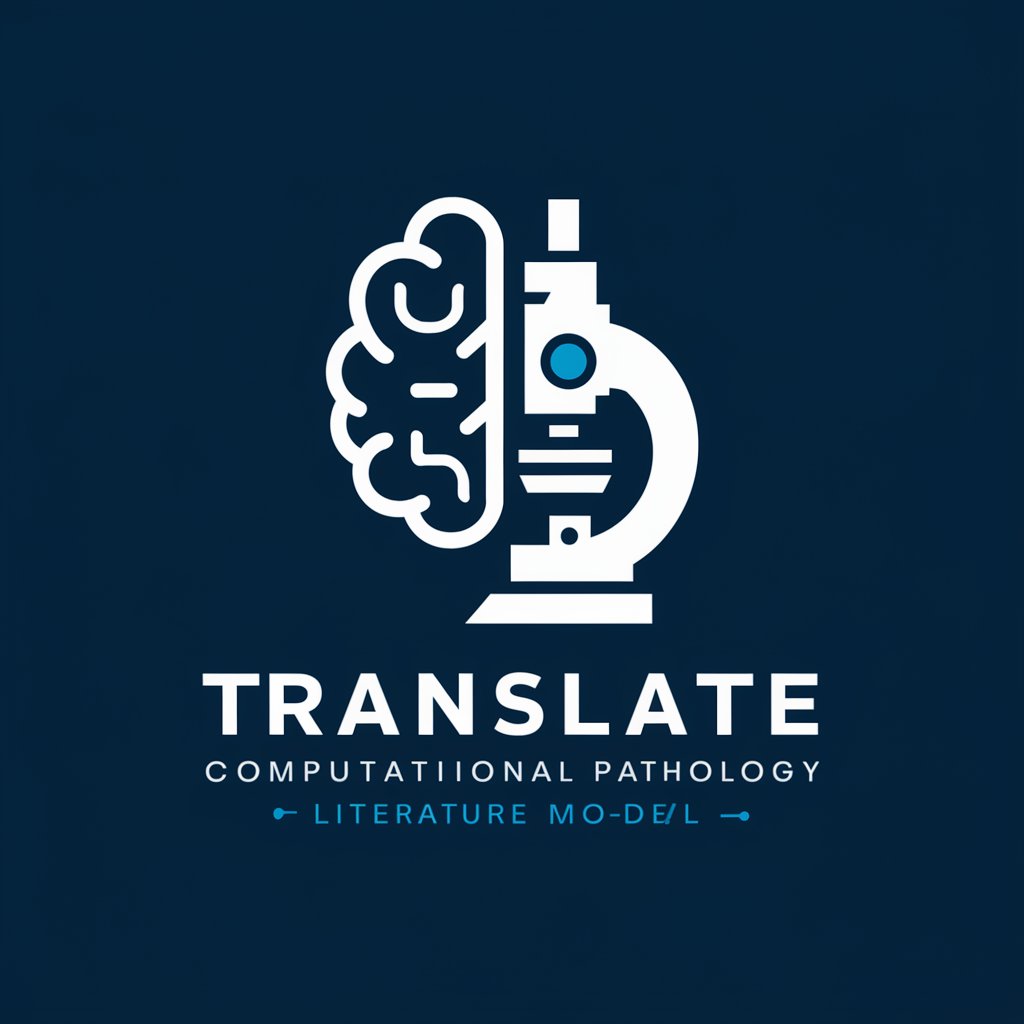Pathology Research Paper Analysis - AI-powered Pathology Analysis

Welcome! Let's delve into the latest in pathology research together.
Deciphering Pathology Papers with AI
Summarize the key findings of the latest pathology research on...
Compare the methodologies used in recent studies on...
Analyze the impact of recent discoveries in the field of pathology on...
Provide a detailed overview of the objectives and results of the study titled...
Get Embed Code
Overview of Pathology Research Paper Analysis
Pathology Research Paper Analysis is designed to aid in the comprehension and dissemination of complex information within the field of pathology. It functions primarily by summarizing recent studies and journals, focusing on key aspects such as study objectives, methodologies, results, and conclusions. This service is particularly useful in scenarios where researchers, educators, or clinicians need to quickly understand the implications of new research without delving into full papers themselves. For example, a researcher might use this service to compare new findings on tumor pathology with existing literature, enhancing their understanding and identifying gaps in knowledge. Powered by ChatGPT-4o。

Core Functions of Pathology Research Paper Analysis
Summarization of Research Papers
Example
For a paper on the molecular pathways in liver disease, this service would extract the hypothesis, the experimental design, key findings, and the implications of the results.
Scenario
A medical researcher uses this summary to prepare for a conference presentation, efficiently integrating key points into slides without reading the entire article.
Comparison of Study Findings
Example
Comparative analysis of different studies on breast cancer markers to determine consensus and divergence in recent research outcomes.
Scenario
An oncologist reviews these comparisons to update treatment protocols based on the most current and robust research findings.
Identification of Research Trends
Example
Analysis of several recent articles on autoimmune diseases to outline trends in research focus, such as an increasing interest in microbiome impacts on disease progression.
Scenario
A curriculum developer uses this trend analysis to update the course content for a medical school's pathology program, ensuring it reflects the latest research.
Target User Groups for Pathology Research Paper Analysis
Academic Researchers
This group includes university professors and students involved in pathology research. They benefit from synthesized research findings that enhance their understanding and contribute to their own research projects.
Medical Professionals
Clinicians, including doctors and nurses, utilize the service to keep abreast of the latest developments in pathology that could influence clinical practices and patient management.
Healthcare Policy Makers
Policy makers might use the service to understand the implications of new research in shaping health policies and protocols, ensuring they are based on the latest scientific evidence.

How to Utilize Pathology Research Paper Analysis
Initiate the Experience
For a complimentary introduction, navigate to yeschat.ai. There's no need for sign-up or a ChatGPT Plus subscription to begin.
Identify Your Research Paper
Have the research paper or papers in pathology you wish to analyze ready, either in digital format or accessible through an online database.
Define Your Objectives
Clearly articulate what you're looking to understand from the analysis, whether it's the study's methodology, results, or a comparative analysis.
Submit Your Request
Present your research paper along with your specific questions or areas of interest directly to the Pathology Research Paper Analysis tool.
Review the Analysis
Carefully read the detailed analysis provided, which includes objectives, methodologies, results, and conclusions from the paper(s).
Try other advanced and practical GPTs
Jesus
Empowering ethical decisions with AI

Jesus
Explore Biblical Wisdom AI-Powered

Jesus
Bringing Biblical Wisdom to Digital Conversations

Jesus
Enlightening paths with AI-powered ancient wisdom

Marathon Mentor
AI-powered Marathon Coaching

Info Neutral
Harness AI for unbiased insights

Translate computational pathology literature
Translating Pathology, Enhancing Knowledge

Termostato Financiero
Reshape Your Financial Future with AI

Image Verifier
Unveil Reality with AI Precision

Truth GPT
Unveiling Truths with AI Precision

Mr. TRUTH
Uncover hidden truths with AI

Planibot Historia
Revolutionizing History Education with AI

Frequently Asked Questions about Pathology Research Paper Analysis
What type of pathology papers can Pathology Research Paper Analysis handle?
The tool is versatile in analyzing a wide range of pathology papers, including but not limited to, clinical pathology, anatomic pathology, molecular pathology, and forensic pathology studies.
Can it compare findings from multiple studies?
Absolutely, one of its key features is the ability to synthesize and compare data and conclusions from multiple research studies, providing a broader perspective on the topic.
How does the tool ensure accuracy in its analysis?
Pathology Research Paper Analysis employs advanced algorithms to process and interpret the data, supplemented by a database of pathology research for cross-reference and validation.
Is there a limit to the number of papers it can analyze at once?
While there's no strict limit, for an optimal and thorough analysis, it's recommended to focus on a manageable number of papers that are central to your research query.
Can this tool help with writing a literature review?
Indeed, it can assist in identifying key studies, summarizing their findings, and highlighting gaps in the literature, thereby facilitating the construction of a comprehensive literature review.
